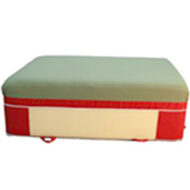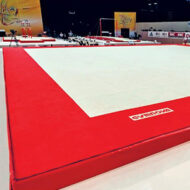The front handspring front tuck
How to teach this skill to your gymnasts



Angelo Ritorto
The front handspring front tuck
How to teach this skill to your gymnasts
description
In this training we'll be showing you how to teach your gymnasts a handspring tuck front.
In the technical analysis, from the last step of the run-up up to the landing after the salto, we'll be examining the details of each important part of the skill.
The video on prerequisites will detail the skills and the points to observe to help you determine if your gymnasts have the capacity to take on this vault.
Then move on to the teaching section. In this video, first of all, you'll find out how to tackle the acrobatic skill of the second flight. After that, you can explore various teaching set-ups and the associated drills to acquire this skill.
Finally, in the video on spotting, we'll go through 6 techniques to support your gymnasts from the first learning exercises right up to performance of the actual vault in a competition set-up.
As always with our training, we have done our best to make the content of our courses as accessible as possible, with the use of graphics, multiple camera angles and of course, the detail of our audio content. We hope that you will really enjoy exploring it and, most importantly, that it will give you multiple solutions to use in training.
Happy learning!
Associated books
Let's Teach artistic gymnastics on Vault - Volume 2
Learn how to teach:
• Handspring front • Tsukahara tuck • Yurchenko •
All the exercises needed to learn these technical elements, from their beginnings to the execution of complete skills
→ 176 exercises - 252 pages - Format 15 x 21 cm -
A note on the series of books, "Let's teach gymnastics":
• Our books are essential companions to the video training on the same topics that you find in the section "Gymnastics Education" here on GymneoTV.
• Their spiral binding and tabbed pages allow you to quickly find the skills you want to look at, and easily locate the drills and training stations.
• The summaries of technique and the large format illustrations made to scale make these books the ideal companions to your training sessions.
Our advice:
• For training session prep: thanks to the technique summary and icons at the top of each page, you can easily find the stations that match the current needs of your gymnasts. You can also anticipate the equipment needs for your upcoming session.
• During training: with the help of realistic images, you can save time by showing your gymnasts the drills to work on. They will also be able to help you set up the training stations and thanks to the illustrations, they'll more easily understand the task at hand.
• You will improve the constant exchange that you have with your athletes. In fact, when giving your instructions, the illustrations create common ground for discussions or reference points. They make it easy to understand and/or visualize technical placements, which makes it much easier to learn the element.
content
- Introduction
- Getting familiar with the tumbling in the postflight (setups with equipment)
- Improving the rhythm of the front handspring
- Implementing the tumbling progression on the vault
- Focus on different learning setups that are useful for learning the front tuck front handspring
- Transitioning from the pit to executions in a competition setting























